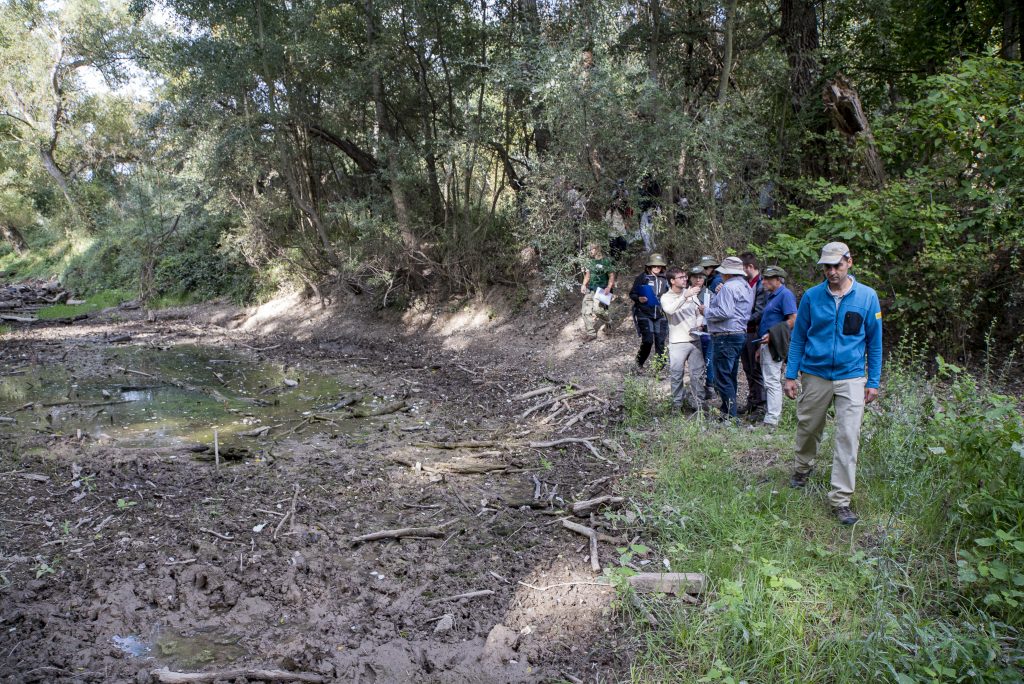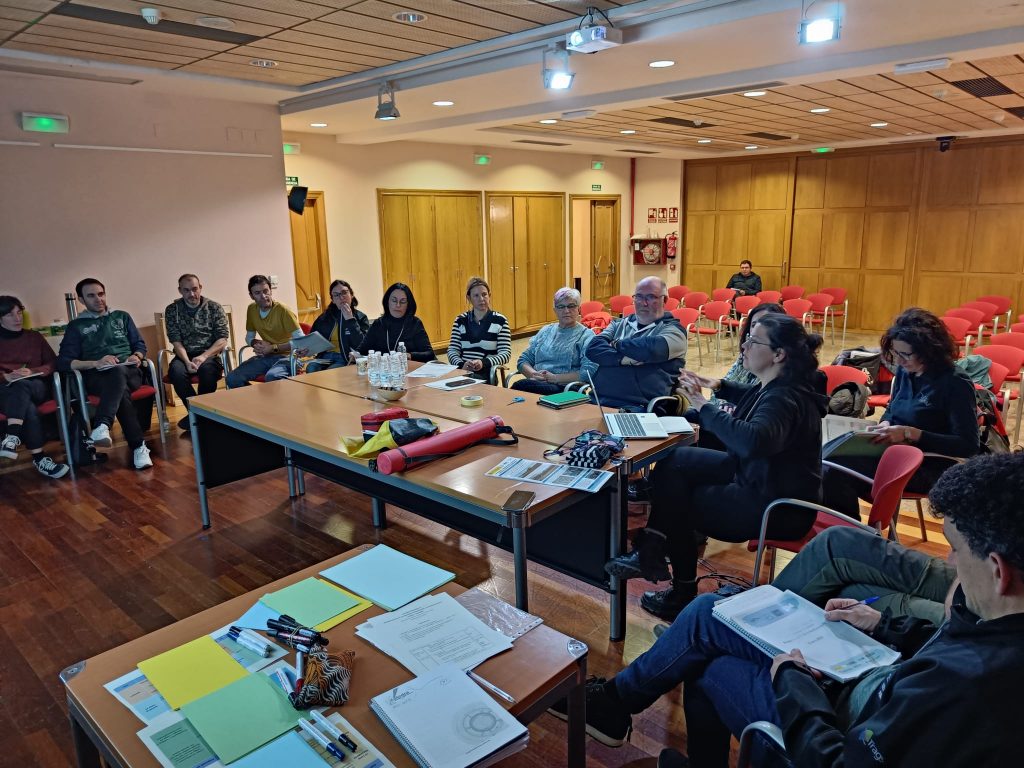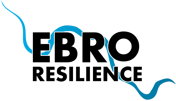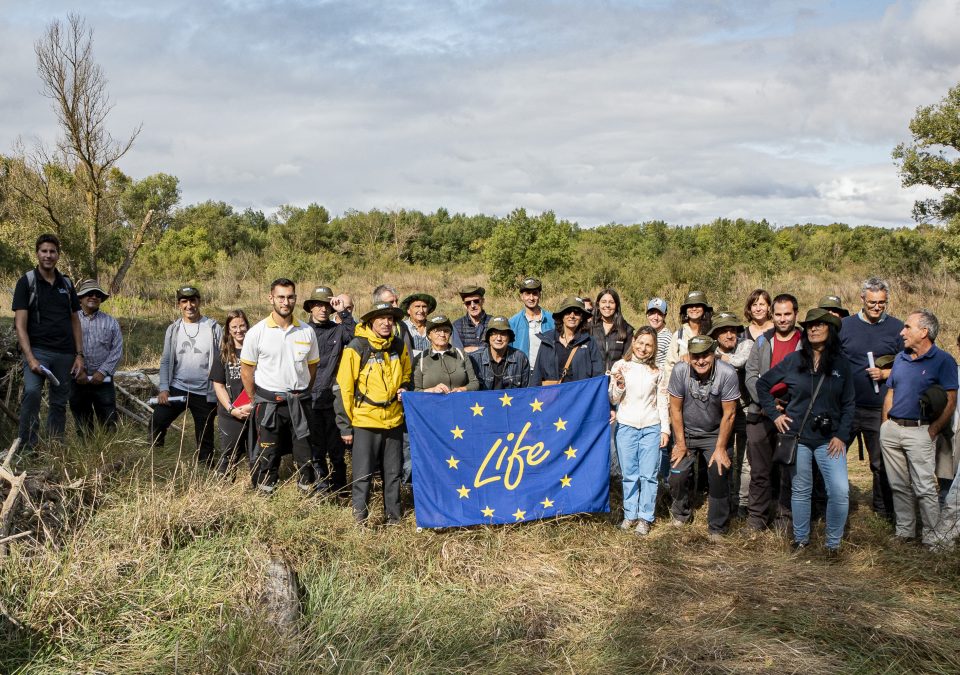The LIFE Ebro Resilience P1 Project has reached two years of work, being the last months the most intense, after overcoming the phase of preparatory work and definition of teams. Its area of intervention is the middle stretch of the Ebro, specifically in the Alfaro-Castejón, between La Rioja and Navarra, and Osera de Ebro – Fuentes de Ebro, in Zaragoza. Its keys, through innovative interventions that are adapted to the specific problems of each area, are:
- Reduce the effects of flooding by 60%, increasing the river space in the action sections by 10% with the elimination of 1.8 km of flood plains and the recessing of an additional 3.9 km.
- Improve the ecological state of the Ebro River in the intervention areas, recovering 60 hectares of river areas, including 3 meanders, and 20 hectares of riparian forest.
- Involve the local population (22,873 inhabitants) in the project.
On Tuesday, September 19, the meetings of the project’s working groups were held in Zaragoza. The technical team with participants from the Project partners reviewed in three meetings the progress of the mitigation actions, the nature and biodiversity proposals and the work in the area of participation, capacity building and communication.
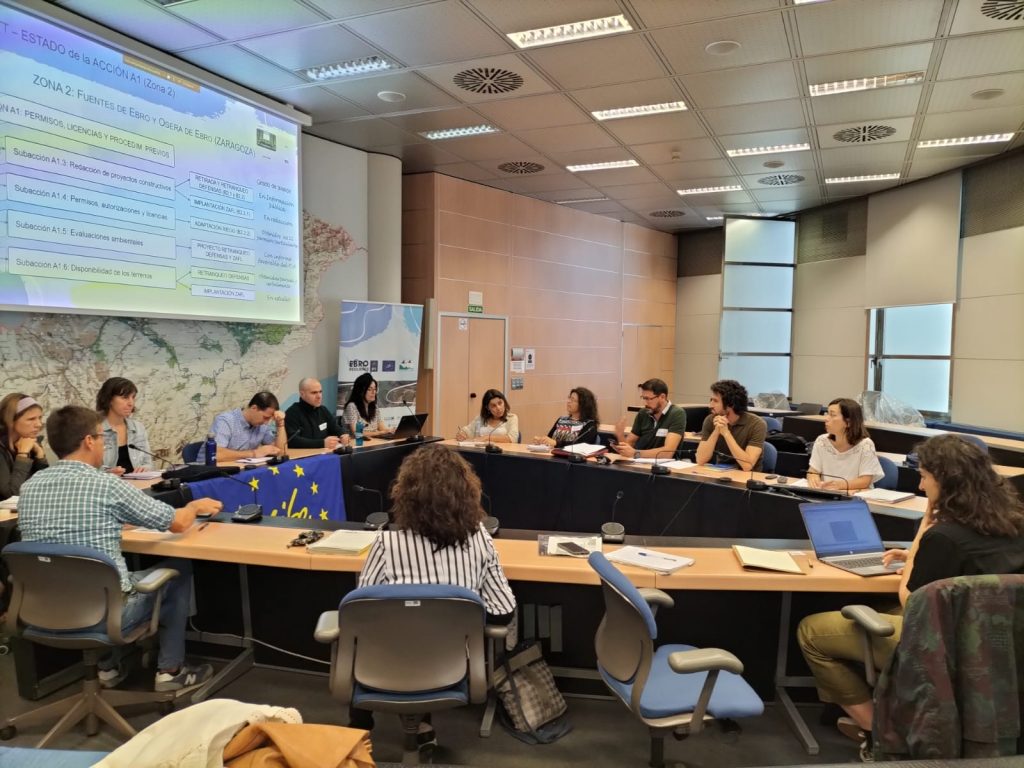
Already in execution works in the riverbed to mitigate the risk of flooding in the so-called Zone 1 (Alfaro in La Rioja – Castejón in Navarra), specifically in La Roza, Alfaro, where 22 hectares of river space have been added to the Natura 2000 Network as a protected area.
In addition, the projects for the meander of El Señorío (also in Zone 1, in the municipality of Castejón) and the meander of Aguilar, which defines Phase 1 of the works in Zone 2 (Osera de Ebro – Fuentes de Ebro, in Zaragoza), have been drafted. For its part, a third project is being defined with the participation groups to reconnect old branches of the river in the Sotos de Alfaro to improve river dynamics.
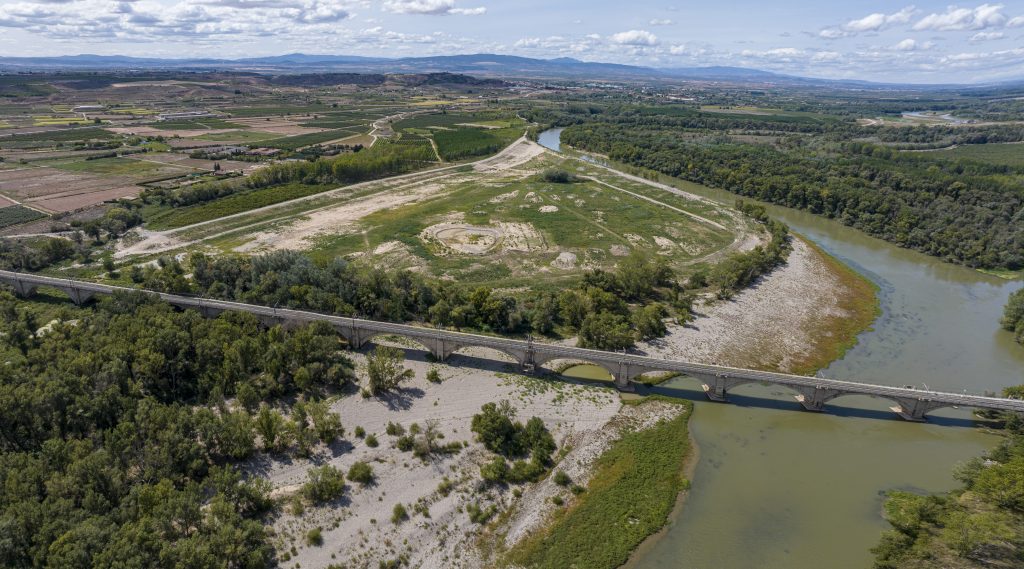
Another of the main lines of work has been social participation, with more than 40 actions, including meetings of stable groups, which monitor interventions and make proposals; public forums and informative conferences.
The LIFE Ebro Resilience P1 Project was approved by the European Commission for the Autonomous Communities of La Rioja, Navarra and Aragón, with a budget of 13,310,350 € and 55% European funding .
The Project stands out for the coordination between the Administrations, which are part of the beneficiaries and partners: the Ministry for Ecological Transition and Demographic Challenge (MITECO), through its companies TRAGSA and TRAGSATEC; Ebro Hydrographic Confederation; Government of La Rioja; Government of Navarra, through Gestión Ambiental de Navarra, S.A. (GAN-NIK); Government of Aragon and the Aragonese Water Institute.
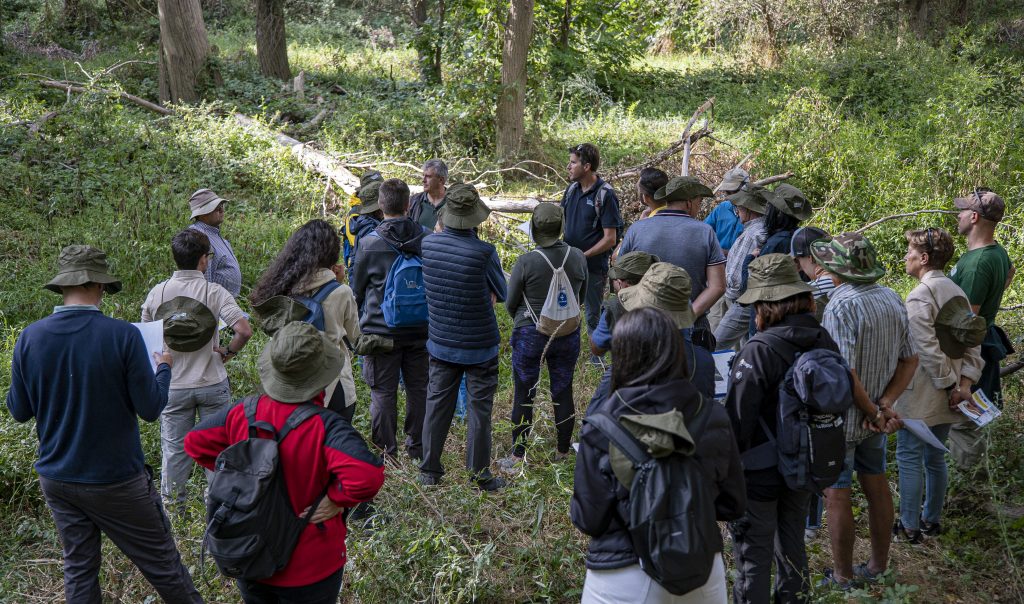
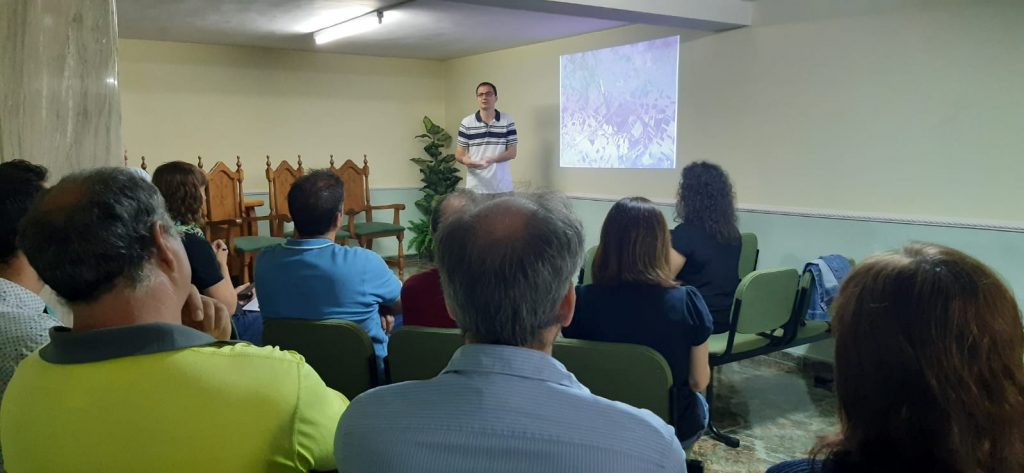
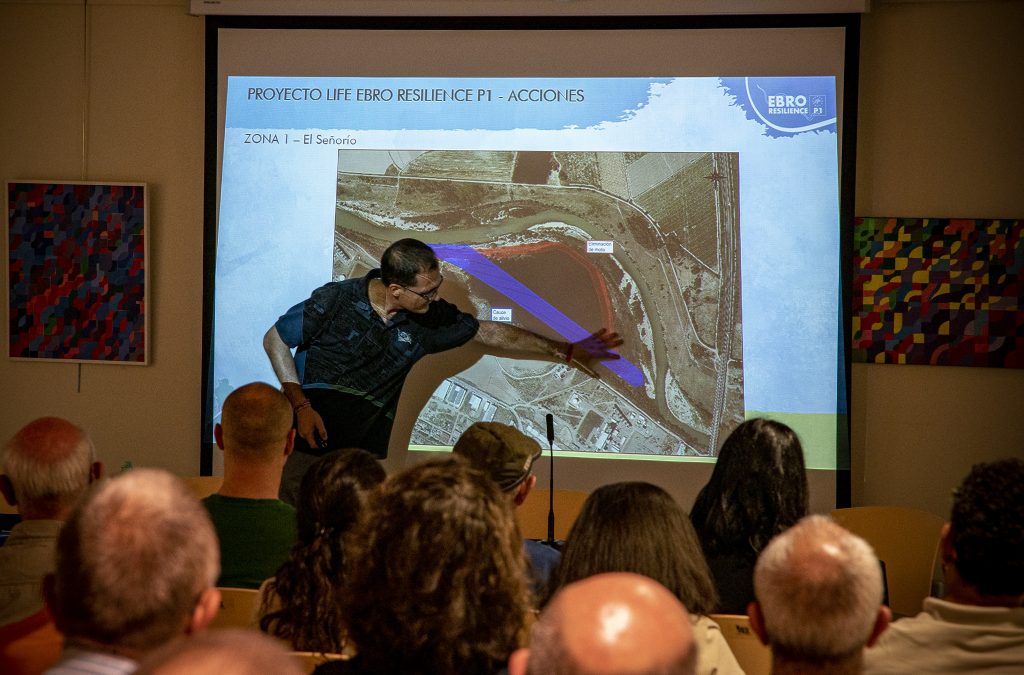
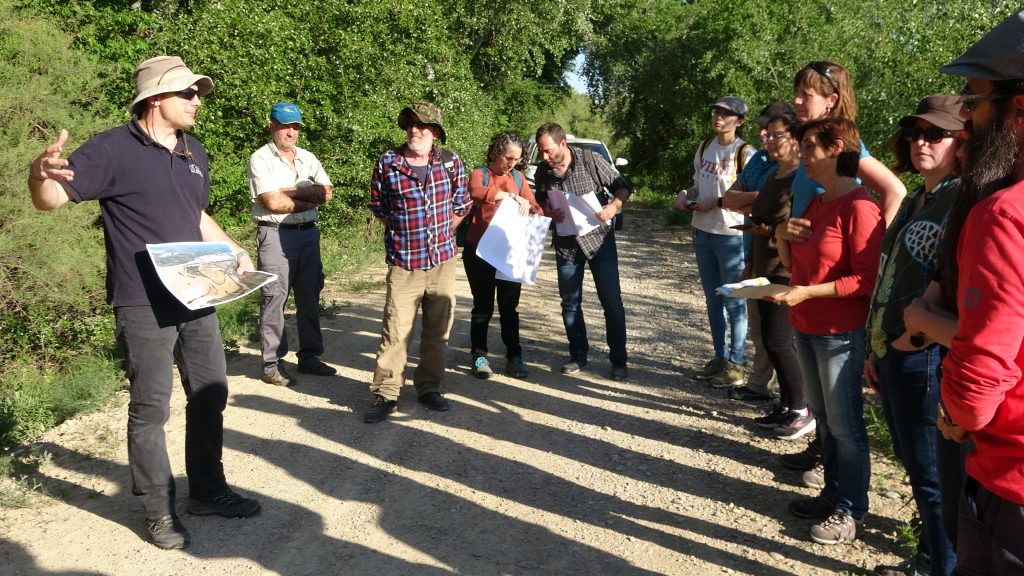
La Roza
The works for the morphological adaptation of the meander of La Roza, in Alfaro, are a continuation of the type of interventions proposed in the Ebro Resilience Strategy. They were started in October 2022 and the defensive embankment has been set back, the drainage capacity of the railroad bridge eyes has been improved and the water circulation branches in the undergrowth behind the bridge have been reopened.
In addition, the 22 hectares recovered for the flood plain have been added to the Red Natura 2000 protected area “Sotos y Riberas del Ebro”, fulfilling the objective of improving the ecological status.
A relief channel has also been built, an additional arm for the river that will operate at high water and facilitate the flow of water through the meander during floods.
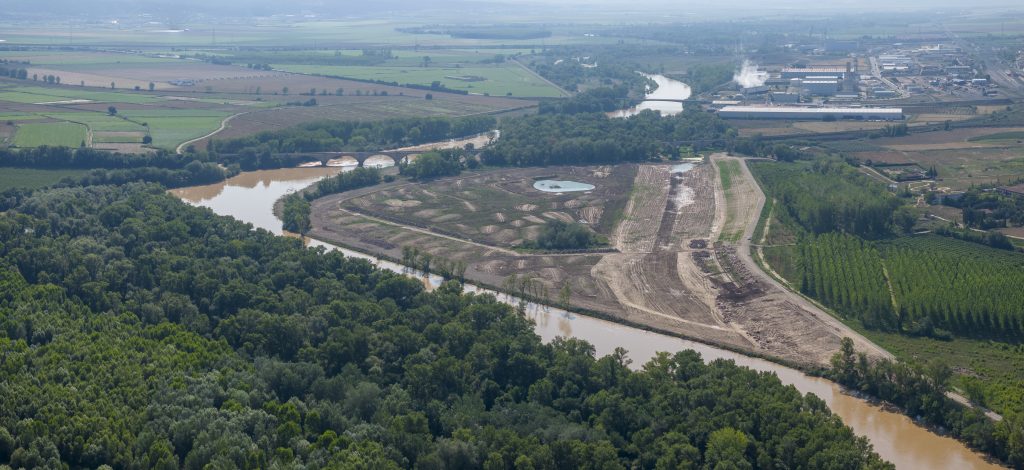
More projects
Zone 1 of the Project between Alfaro and Castejón is integrated in the “Combined section of actions”, a succession of natural water retention measures (mainly with the recovery of fluvial space). This section also includes the project for the restoration and morphological adaptation of the meander of El Señorío, in Castejón, Navarra. This project has passed its Public Information phase and its definition has counted, through different forums, with the participation of stakeholders of the territory.
In addition, in this combined section, an action is located for the reconnection of old river branches in the Sotos de Alfaro area, in the Soto del Tamarigal, which is currently being drafted and is expected to be defined with contributions from the members of the specific participation groups.
In addition, the Public Information of the project “Mejora de la resiliencia ante inundaciones en el río Ebro, a su paso por Osera de Ebro y Fuentes de Ebro, en Zaragoza. Fase 1″ will soon be completed.Improvement of flood resilience in the Ebro River, as it passes through Osera de Ebro and Fuentes de Ebro, in Zaragoza. Phase 1″in Zone 2 of the LIFE Ebro Resilience Project. The objective: to reduce the river’s narrowing and increase its drainage capacity.
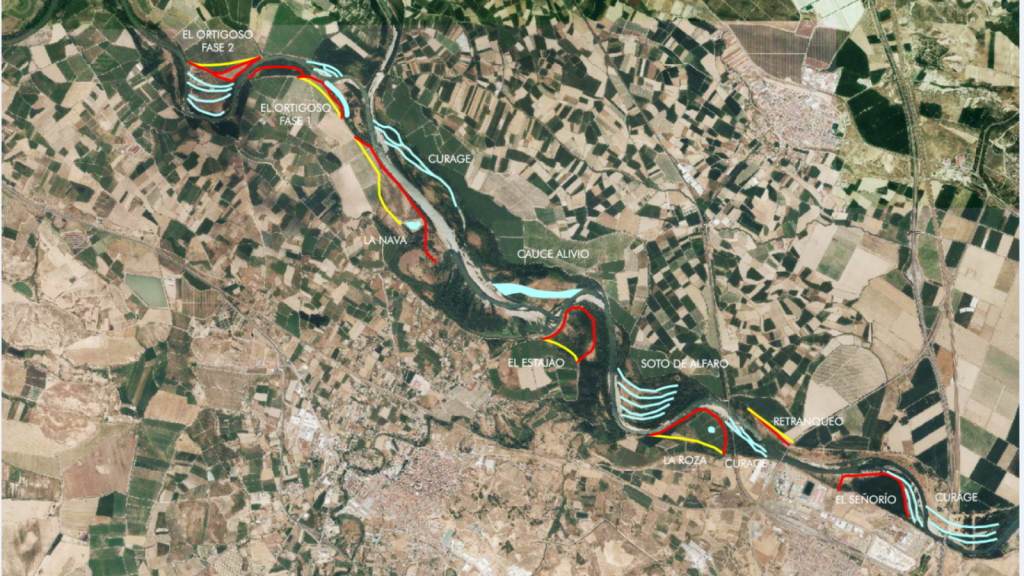
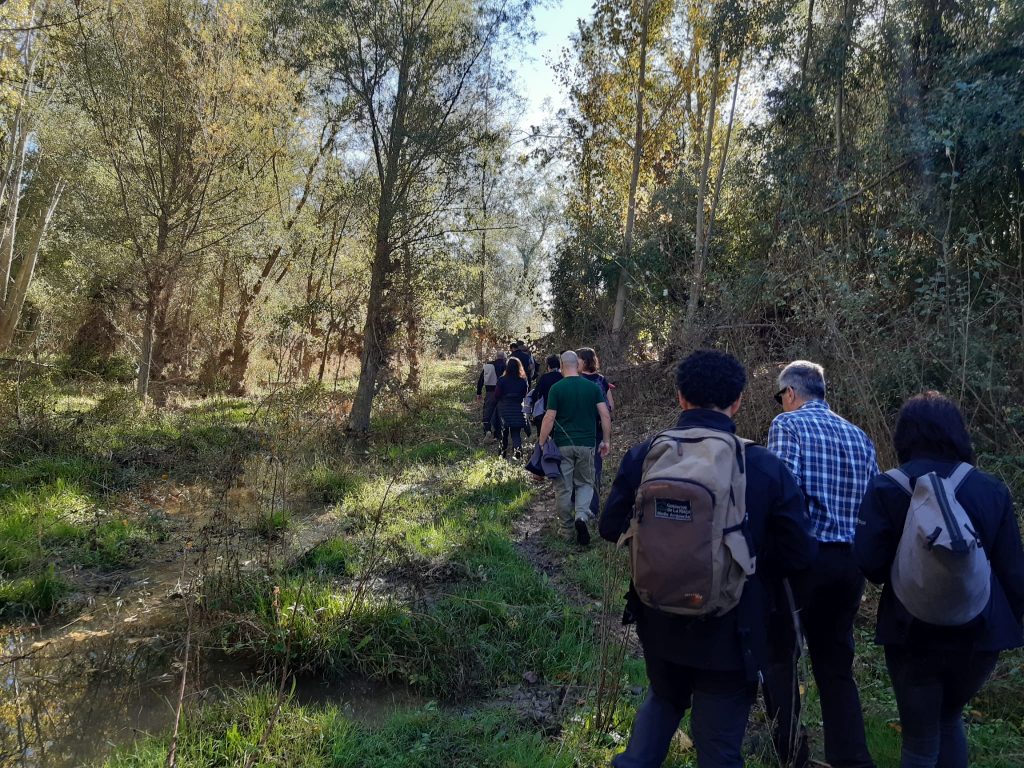

Participation and training of the population
The LIFE Project is making an important effort to achieve the involvement of the local population, creating spaces for participation that are a milestone in flood risk management, as there are no previous experiences with the same scope, neither in Spain nor in Europe.
One of the pilot actions is the creation of the Stable Conflict Mediation Group. In order to improve social awareness and understanding of the different dimensions of flood risk management, a stable group of 25 stakeholders from the middle reaches of the Ebro River has been formed to seek dialogue on flood-related conflicts.
Another avenue explored by the Project is the so-called co-creation groups.The project has a total of six in the area of action (three for the Alfaro-Castejón section and three for the Zaragoza area), bringing together the technical representatives of the partners and local stakeholders in a forum that allows for continuous participation and greater impact when analyzing the proposals.
The proposal for the creation of a virtual platform for monitoring the interventions, a citizen science experience to increase the general knowledge of the river and of the LIFE actions, is in the development phase.
In addition to all this, there will be public conferences and forums that aim to reach a greater number of riverside inhabitants and to disseminate information about the aspects of the Project.
To date, 10 informative sessions, 27 meetings of the co-creation groups, 3 deliberative forums and 3 meetings of the stable mediation group have been held.
Finally, the LIFE Ebro Resilience P1 project has a detailed capacity building plan. A line of action to increase the population’s knowledge of the river and the phenomenon of floods, for which eight types of informative materials are being prepared and 16 campaigns are planned for different sectors of the population (technicians, educational sector, communicators, primary sector, environmental sector, general public…).
